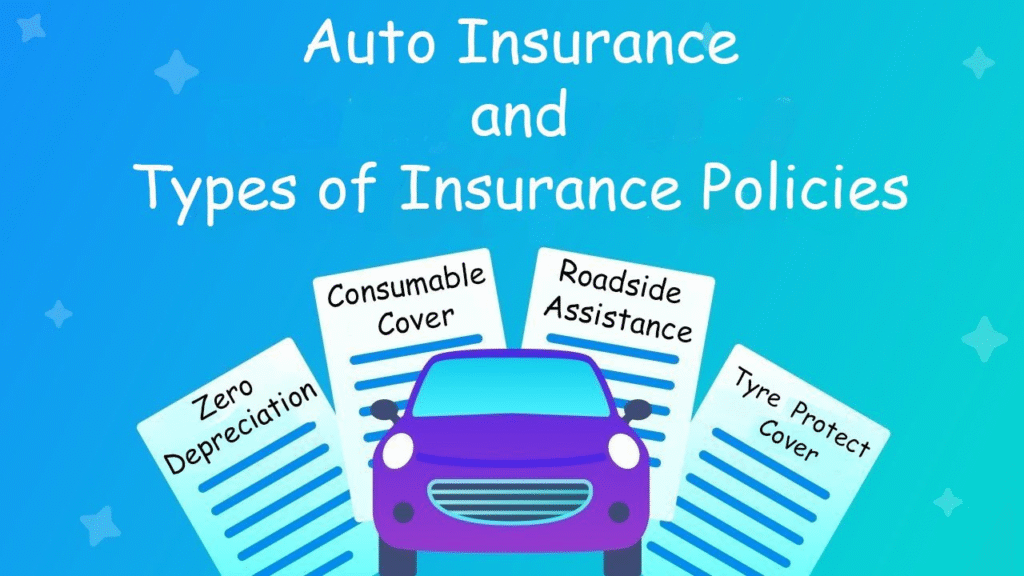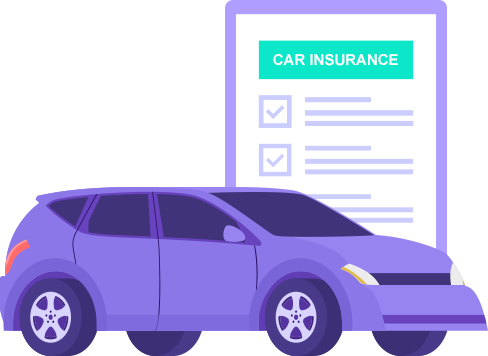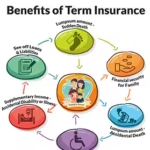Car insurance is an essential aspect of responsible vehicle ownership. It provides financial protection against unexpected accidents, theft, and other risks associated with driving. However, navigating the myriad of car insurance policies available can be overwhelming. Each policy differs in coverage types, costs, benefits, and exclusions. Understanding these differences is critical to selecting the best car insurance that fits your needs and budget.
This article will provide an in-depth comparison of different car insurance policies, exploring their features, benefits, limitations, and ideal use cases. Whether you are a new driver, a seasoned motorist, or someone looking to switch insurance providers, this comprehensive guide will equip you with the knowledge to make informed decisions.
Key Takeaways
- Car insurance policies vary widely in coverage, cost, and benefits.
- Liability-only insurance meets legal requirements but offers limited protection.
- Collision and comprehensive coverage protect your vehicle against various risks.
- Personal Injury Protection covers medical expenses, regardless of fault.
- Uninsured motorist coverage safeguards against uninsured drivers.
- Usage-based insurance offers personalized premiums based on driving behavior.
- Choosing the right policy involves evaluating your vehicle, finances, and driving habits.
- Comparing quotes and understanding policy terms ensures the best value and coverage.
Choosing the right car insurance policy isn’t just about meeting legal requirements — it’s about protecting yourself, your passengers, and your financial well-being on the road.
Understanding Car Insurance Basics

Car insurance is a legal contract designed to protect drivers and vehicle owners from the financial consequences of accidents, theft, and other unexpected events involving their vehicles. While many understand that having car insurance is a requirement in most regions, fewer fully grasp the complexities and nuances behind the coverage options, terms, and conditions.
This foundational knowledge is essential for making informed decisions about the type and extent of coverage one needs. In this section, we’ll explore what car insurance is, how it works, the key components of car insurance policies, and why it’s important.
What is Car Insurance?
Car insurance is a policy purchased from an insurance company, whereby the insurer agrees to cover certain financial losses associated with owning and operating a vehicle. These losses might arise from property damage, bodily injury, theft, or liability claims when the insured is at fault or involved in a motor vehicle accident.
In exchange, the policyholder pays a premium—a regular fee, typically monthly or annually—to the insurance company. This premium amount varies based on factors such as the driver’s age, driving history, type of vehicle, coverage levels, and geographic location.
How Does Car Insurance Work?
When you purchase car insurance, you enter a contract with the insurer that outlines the coverage you have, the limits, deductibles, and the situations under which the insurance company will pay for losses or damages.
If an incident occurs, such as a collision, theft, or damage due to weather, you file a claim with your insurer. The insurer will investigate the claim, determine if it’s covered under your policy, and pay out accordingly, minus any deductible you owe.
- Premium: The amount you pay for your car insurance policy, usually monthly or annually.
- Deductible: The amount you pay out-of-pocket before the insurer covers the rest of the cost after a claim.
- Coverage Limits: The maximum amount the insurer will pay for a claim.
Key Components of Car Insurance Policies
Car insurance policies typically consist of several types of coverage, each serving a different purpose. Understanding these components is critical to tailoring your policy to your needs.
- Liability Coverage
Liability coverage is mandatory in most jurisdictions. It protects you if you cause injury or property damage to others in an accident. There are two parts:- Bodily Injury Liability: Covers medical expenses, lost wages, and legal fees if you injure someone.
- Property Damage Liability: Covers repairs or replacement of other people’s property damaged in an accident.
- Collision Coverage
This covers damage to your own vehicle resulting from a collision with another car or object, regardless of fault. It helps pay for repairs or replacement of your car. - Comprehensive Coverage
Comprehensive insurance protects your vehicle against damage not caused by collision. This includes theft, vandalism, natural disasters (like floods or hail), fire, and hitting an animal. - Personal Injury Protection (PIP)
Also called no-fault insurance, PIP covers medical expenses and sometimes lost wages and other costs for you and your passengers, regardless of who caused the accident. - Uninsured/Underinsured Motorist Coverage
This protects you if you’re in an accident caused by a driver without insurance or insufficient insurance. - Additional Coverages
Depending on the insurer, you might add other coverages such as roadside assistance, rental car reimbursement, or gap insurance (covering the difference between car value and loan balance).
Why is Car Insurance Important?
Owning car insurance is not just a legal obligation in most places—it’s a vital financial safeguard. Accidents can lead to costly repairs, medical bills, legal expenses, and liability claims that could otherwise ruin your financial stability.
- Protects Your Finances: Insurance covers large expenses that you cannot afford to pay out-of-pocket.
- Legal Compliance: Most states and countries require minimum liability insurance to drive legally.
- Peace of Mind: Knowing you’re covered helps reduce stress and uncertainty on the road.
- Protects Others: Liability insurance ensures victims of accidents can receive compensation.
- Supports Vehicle Financing: Lenders often require comprehensive and collision coverage on financed vehicles.
Factors Affecting Car Insurance Premiums
Your car insurance premiums depend on many factors, including:
Claims History: Previous claims can increase premiums.
Driver Profile: Age, gender, driving history, and credit score can influence rates.
Vehicle Type: Make, model, age, and safety features affect risk and premiums.
Coverage Amounts: Higher coverage limits and lower deductibles mean higher premiums.
Location: Urban areas with higher theft or accident rates typically see higher premiums.
Usage: How often and how far you drive impacts your risk.
Types of Car Insurance Policies and How They Compare

Car insurance is not a one-size-fits-all product. Depending on your personal circumstances, state laws, vehicle type, and risk tolerance, the right car insurance policy can look very different for each driver. To make an informed decision, it’s crucial to understand the various types of car insurance policies available and how they compare in terms of coverage, cost, and benefits.
This section breaks down the most common car insurance policy types, highlighting their unique features, advantages, and potential drawbacks. By comparing these policies side-by-side, you’ll gain clarity on which coverage aligns best with your needs and budget.
Liability-Only Car Insurance
Liability insurance is the foundation of most car insurance policies and often the only type required by law. It protects you financially if you cause injury to others or damage their property while driving.
- What it covers:
- Bodily injury to others (medical bills, lost wages, legal fees)
- Property damage to other people’s vehicles or property
- What it doesn’t cover:
- Your own medical expenses
- Damage to your vehicle
- Theft or vandalism
- Pros:
- Lowest cost option, making it attractive for budget-conscious drivers
- Satisfies legal requirements in most states or countries
- Cons:
- Leaves you vulnerable to high out-of-pocket costs if you cause an accident that damages your vehicle or causes your injury
- May not cover all accident-related expenses
- Ideal for:
- Drivers with older or low-value vehicles
- Drivers seeking minimum legal coverage
- Those willing to accept financial risk on their own vehicle
Collision Car Insurance
Collision coverage pays for repairs to your vehicle if you are involved in a collision with another vehicle or object, regardless of fault.
- What it covers:
- Damage from collisions with other cars or objects such as poles, fences, or guardrails
- Repairs or replacement of your vehicle after an accident
- What it doesn’t cover:
- Theft or non-collision damage (covered under comprehensive)
- Injuries or damage to others
- Pros:
- Protects your vehicle’s value, especially important for newer cars
- Often required by lenders or leasing companies
- Cons:
- Premiums can be significantly higher than liability-only policies
- Deductibles apply, which must be paid before the insurer pays out
- Ideal for:
- Owners of newer or financed vehicles
- Drivers wanting to protect against repair or replacement costs after collisions
Comprehensive Car Insurance
Comprehensive coverage protects your vehicle from damage not caused by collisions. It includes risks like theft, fire, vandalism, natural disasters, and hitting an animal.
- What it covers:
- Theft or attempted theft
- Vandalism or malicious damage
- Natural events such as floods, hail, fire, and storms
- Damage from hitting animals (e.g., deer)
- Broken glass or windshield repair
- What it doesn’t cover:
- Collision damage
- Injuries or liability to others
- Pros:
- Broad protection against various non-collision risks
- Adds value and peace of mind for vehicle owners
- Cons:
- Adds to the premium cost
- Deductibles usually apply
- Ideal for:
- Owners of newer or valuable cars
- Drivers living in areas prone to theft or natural hazards
Personal Injury Protection (PIP)
Also called no-fault insurance in some areas, PIP covers medical expenses and sometimes lost wages or other related costs after an accident, regardless of who is at fault.
- What it covers:
- Medical treatment for you and your passengers
- Lost wages due to injury
- Funeral expenses
- Rehabilitation costs
- What it doesn’t cover:
- Vehicle repairs
- Liability for others’ injuries or property damage
- Pros:
- Speeds up access to medical benefits without waiting for fault determination
- Important in no-fault states where it is mandatory
- Cons:
- Can increase premiums significantly
- Coverage limits may be capped
- Ideal for:
- Drivers seeking quick medical and wage replacement coverage
- Residents of states where PIP is mandatory
Uninsured/Underinsured Motorist Coverage
This coverage protects you if you are involved in an accident caused by a driver who has no insurance or insufficient insurance to cover your damages.
- What it covers:
- Medical bills and lost wages if hit by an uninsured driver
- Repair costs for your vehicle from uninsured or hit-and-run drivers
- What it doesn’t cover:
- Damage or injury caused by insured drivers (covered by liability)
- Pros:
- Provides financial protection from uninsured drivers
- Often a cost-effective addition to your policy
- Cons:
- Premiums may increase slightly
- Coverage limits apply
- Ideal for:
- Drivers in states with high rates of uninsured motorists
- Those who want added financial security
Full Coverage Car Insurance
Full coverage generally refers to a combination of liability, collision, and comprehensive insurance, providing broad protection for both you and others.
- What it covers:
- Liability for bodily injury and property damage
- Repairs or replacement for your vehicle after collision
- Protection against theft, vandalism, and natural disasters
- May include other optional coverages like PIP and uninsured motorist
- What it doesn’t cover:
- Damage caused intentionally or by certain excluded risks (check policy)
- Pros:
- Provides extensive protection for a variety of risks
- Required by lenders for financed vehicles
- Reduces out-of-pocket expenses after accidents
- Cons:
- Highest premium costs among all policy types
- May cover risks you perceive as unlikely or low risk
- Ideal for:
- Drivers with newer, expensive, or financed vehicles
- Those seeking maximum peace of mind
Usage-Based and Pay-Per-Mile Car Insurance
These innovative policies adjust premiums based on actual driving behavior and mileage, often tracked by telematics devices or smartphone apps.
- What it covers:
- Similar coverages as standard policies but priced according to driving habits
- What it doesn’t cover:
- Coverage limits and exclusions vary by insurer
- Pros:
- Can save money for safe, low-mileage drivers
- Encourages better driving habits through feedback
- Cons:
- Requires consent to monitoring and data sharing
- Savings depend on how you drive; aggressive drivers may pay more
- Ideal for:
- Drivers who drive infrequently or carefully
- Those comfortable with technology and data sharing
Summary Comparison
| Policy Type | Coverage Focus | Typical Cost | Key Advantage | Best For |
|---|---|---|---|---|
| Liability-Only | Others’ injuries and property damage | Lowest | Meets legal requirements | Older cars, budget-conscious |
| Collision | Your vehicle collision damage | Moderate-High | Protects your vehicle | Newer/financed vehicles |
| Comprehensive | Non-collision damage (theft, weather, etc.) | Moderate-High | Covers broad non-collision risks | Areas with theft/natural hazards |
| Personal Injury Protection | Medical expenses regardless of fault | Varies | Fast medical expense coverage | No-fault states, health coverage |
| Uninsured/Underinsured | Damage caused by uninsured drivers | Low-Moderate | Protects vs. uninsured drivers | High uninsured driver regions |
| Full Coverage | Liability + Collision + Comprehensive | Highest | Extensive overall protection | Newer, financed vehicles |
| Usage-Based/Pay-Per-Mile | Customized based on driving behavior | Variable | Potential savings for safe drivers | Low-mileage/safe drivers |
Final Thoughts on Comparing Car Insurance Policies
Choosing the right car insurance policy requires a balance between protection and affordability. Liability insurance might be sufficient for some drivers, but for those with newer or valuable cars, collision and comprehensive coverages provide vital protection. PIP and uninsured motorist coverages address medical costs and uninsured driver risks respectively, while full coverage policies offer the most comprehensive safety net.
Additionally, modern usage-based policies are changing how premiums are calculated, rewarding safe and low-mileage drivers.
When comparing policies, always consider your vehicle’s value, your financial ability to absorb losses, legal requirements, and your comfort with risk. This careful evaluation will ensure that your car insurance policy provides adequate protection without unnecessary costs.
Key Factors Affecting Car Insurance Policy Choice
When comparing car insurance policies, consider:
- Coverage Needs: Assess your vehicle value, driving habits, and risk tolerance.
- Premium Costs: Higher coverage generally means higher premiums.
- Deductibles: The amount you pay before insurance kicks in.
- Policy Limits: The maximum amount the insurer will pay.
- Exclusions: Situations not covered by the policy.
- State Requirements: Legal minimums vary by location.
- Discounts: Many insurers offer discounts for safe driving, bundling policies, etc.
How to Choose the Best Car Insurance Policy for You
- Evaluate your vehicle: Newer cars benefit from collision and comprehensive coverage.
- Consider your financial situation: Choose coverage and deductibles that fit your budget.
- Review your driving environment: High-theft or high-accident areas may warrant comprehensive coverage.
- Compare quotes: Get multiple quotes to find the best price.
- Understand the policy details: Read the fine print for exclusions and coverage limits.
- Look for discounts and perks: Safe driver, multi-policy, or loyalty discounts can reduce costs.
- Check the insurer’s reputation: Look for customer reviews and claims service ratings.
Benefits of Understanding Different Car Insurance Policies
Understanding car insurance policies helps you avoid paying for unnecessary coverage or leaving yourself underinsured. It empowers you to:
- Save money through smarter choices.
- Protect your assets.
- Ensure compliance with laws.
- Handle accidents and claims smoothly.
Also Read :How Can You Find the Best Affordable Life Insurance?
Conclusion
Car insurance is a vital safety net that offers financial protection from the unpredictable nature of driving. The vast array of car insurance policies caters to different needs, budgets, and legal requirements. From basic liability to comprehensive full coverage and innovative usage-based policies, the choice depends largely on your vehicle’s value, personal risk tolerance, and financial situation.
By understanding how different car insurance policies compare, you can tailor your coverage to maximize protection while minimizing costs. Always take the time to read policy details, compare quotes, and consult trusted advisors to make an informed decision.
FAQs
Q1: What is the difference between liability and full coverage car insurance?
Liability insurance covers damage you cause to others, while full coverage includes liability plus collision and comprehensive coverage protecting your own vehicle.
Q2: Do I need collision and comprehensive coverage if I have an older car?
It depends on your car’s value and your risk tolerance. Older cars may not justify higher premiums for these coverages.
Q3: How can I lower my car insurance premium?
You can increase deductibles, bundle policies, maintain a good driving record, and shop around for discounts.
Q4: What does uninsured motorist coverage do?
It protects you financially if an uninsured or underinsured driver causes an accident.
Q5: Is personal injury protection available everywhere?
No, PIP is mostly available in no-fault states and may not be mandatory elsewhere.
Q6: How do usage-based insurance policies work?
They monitor driving habits and mileage to adjust premiums accordingly.
Q7: Can I switch car insurance providers anytime?
Yes, but it’s best to coordinate the switch so you’re not uninsured at any point.


